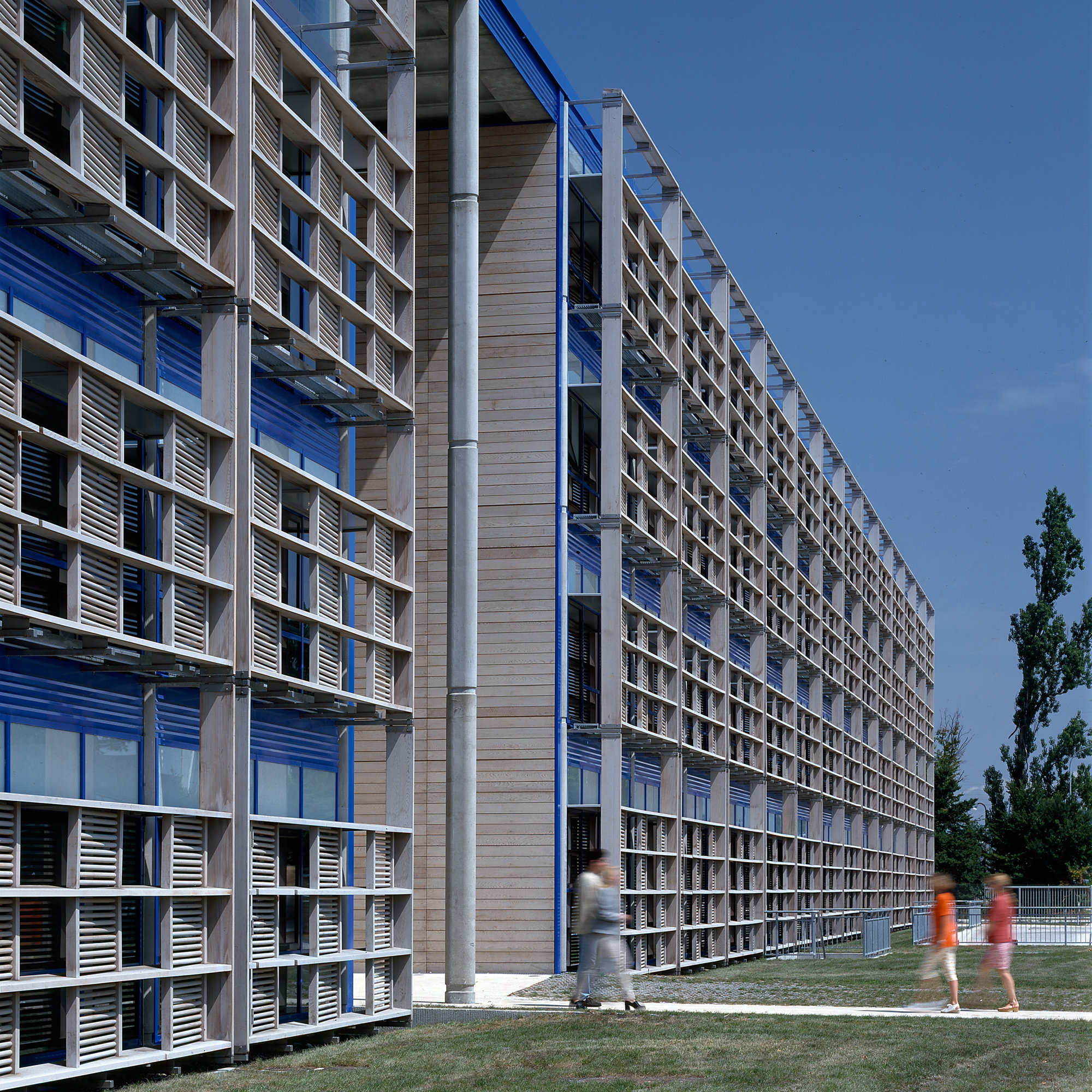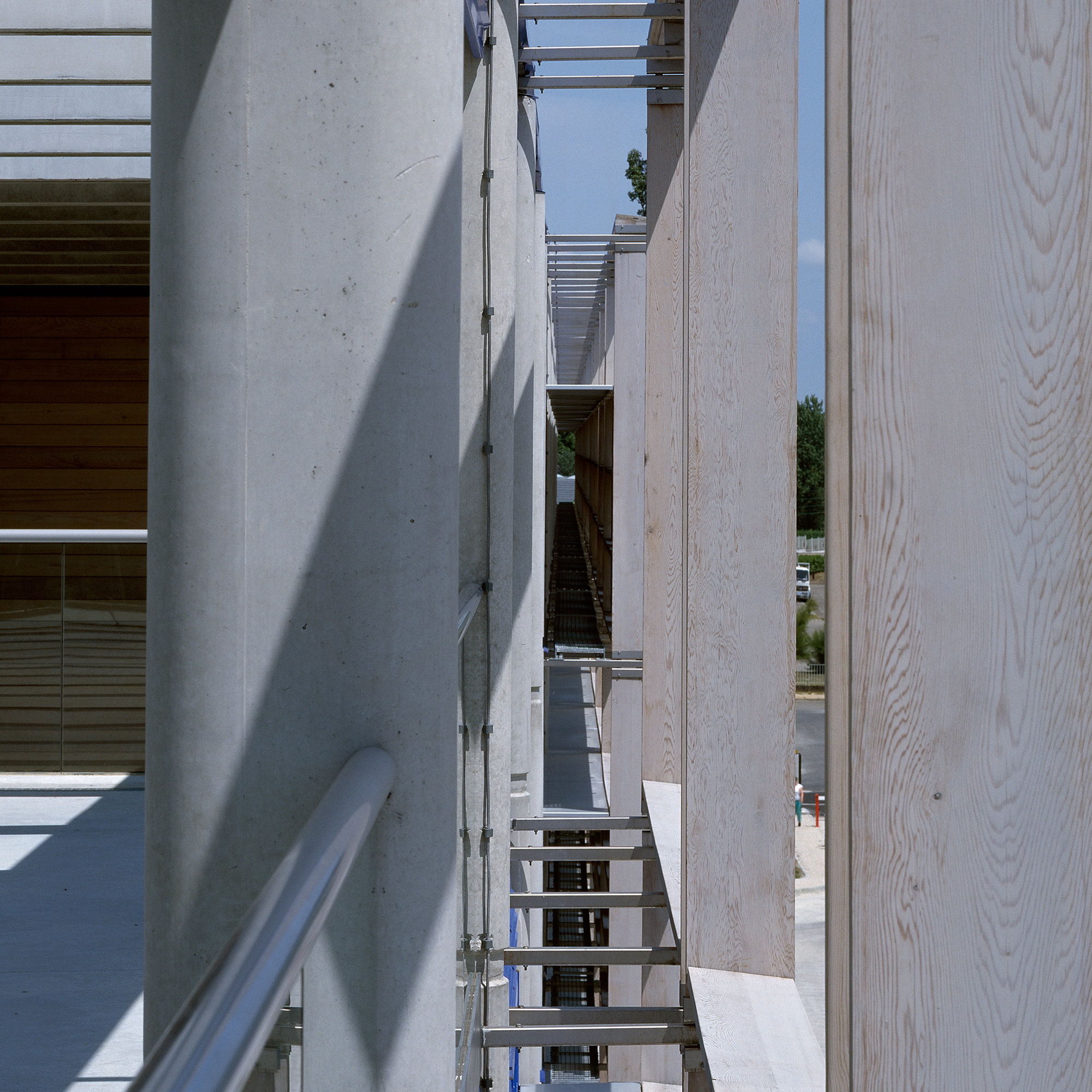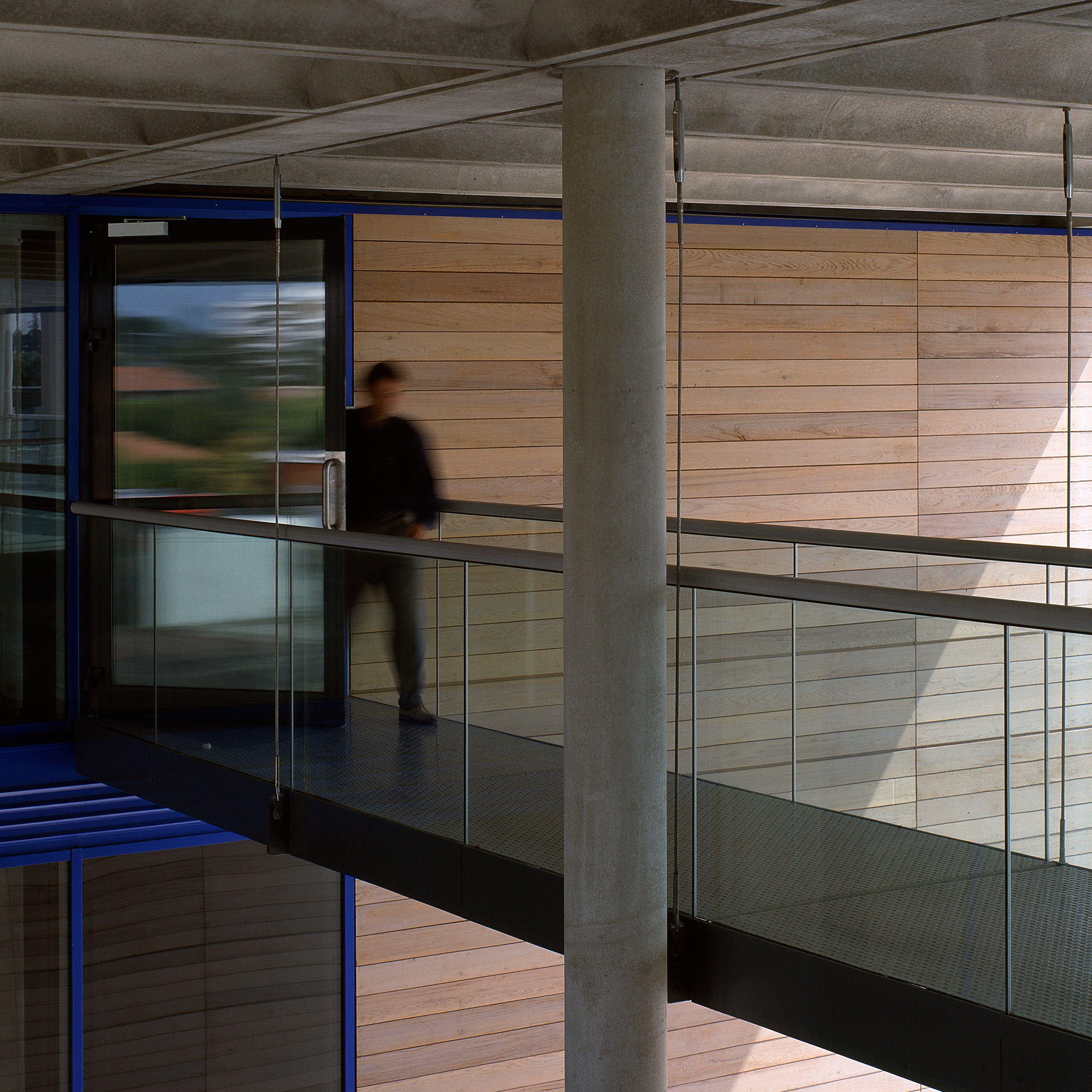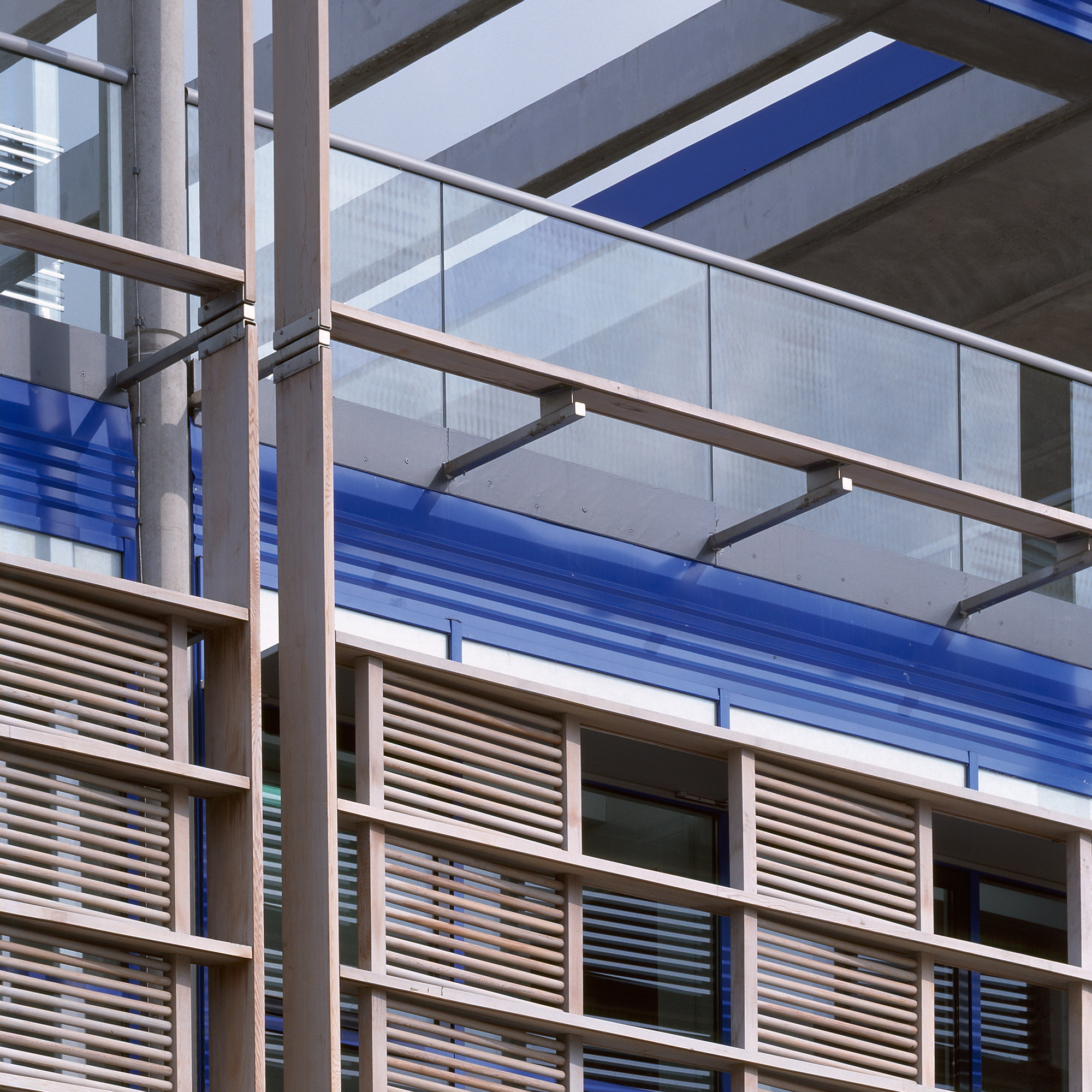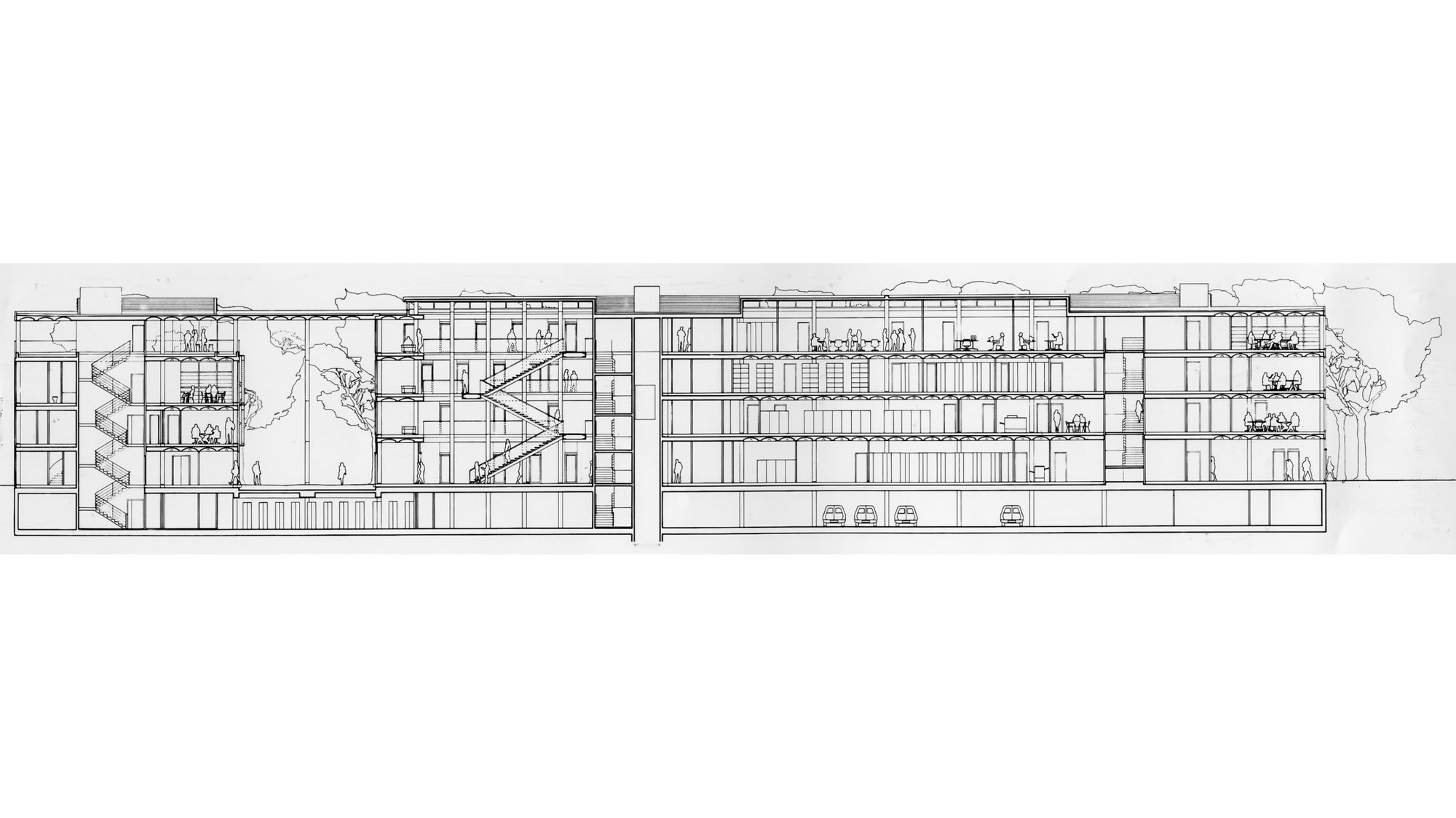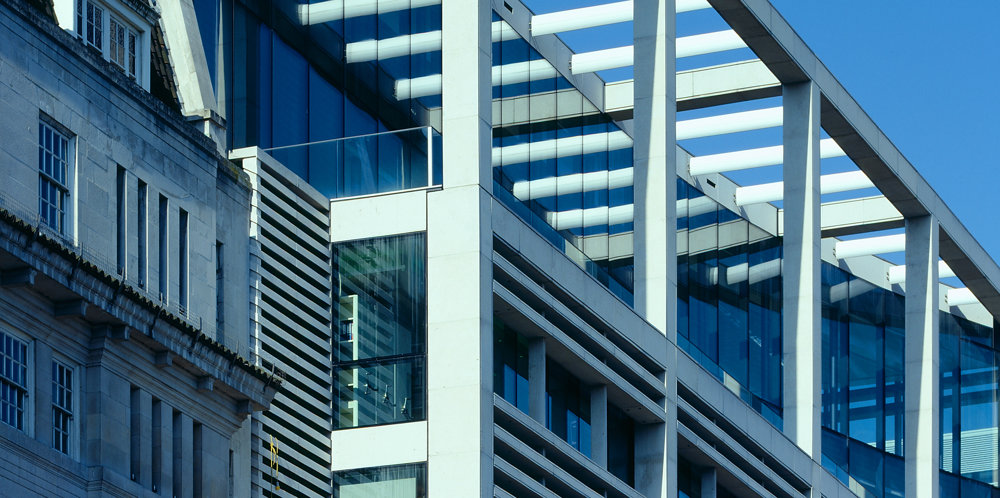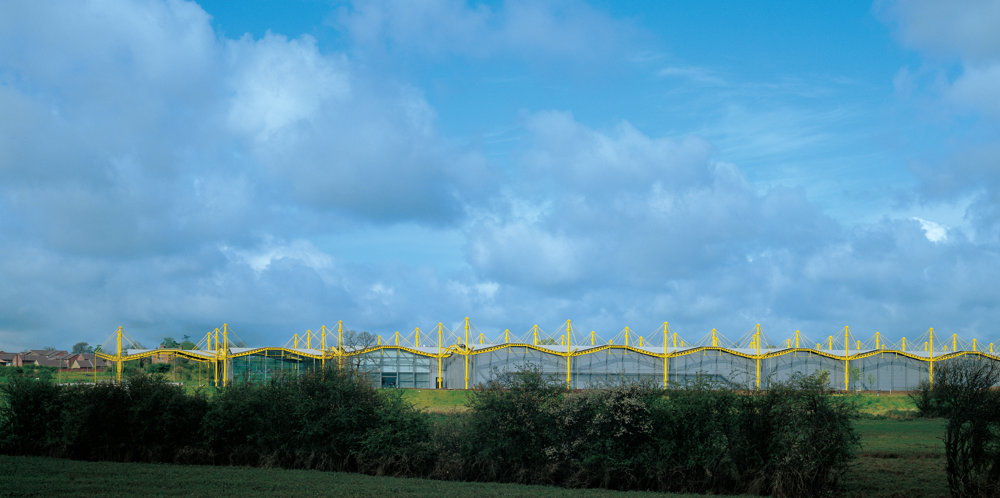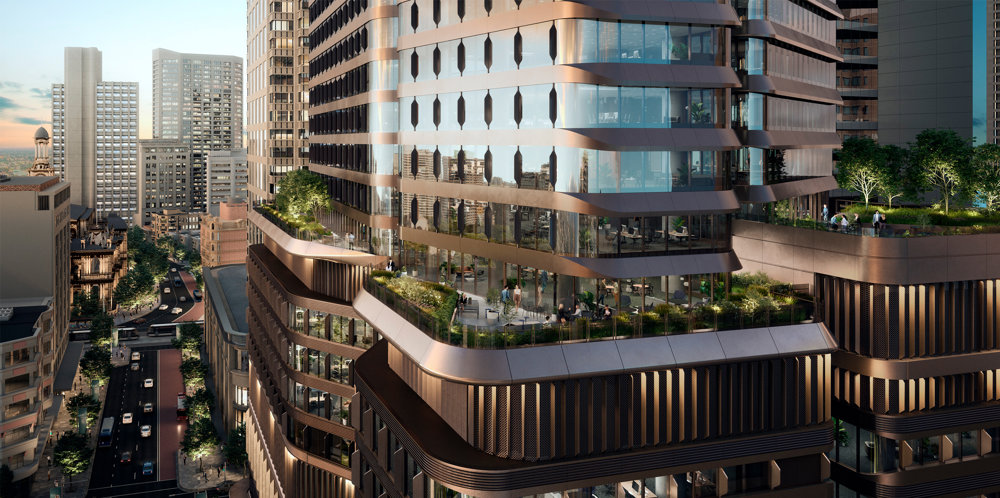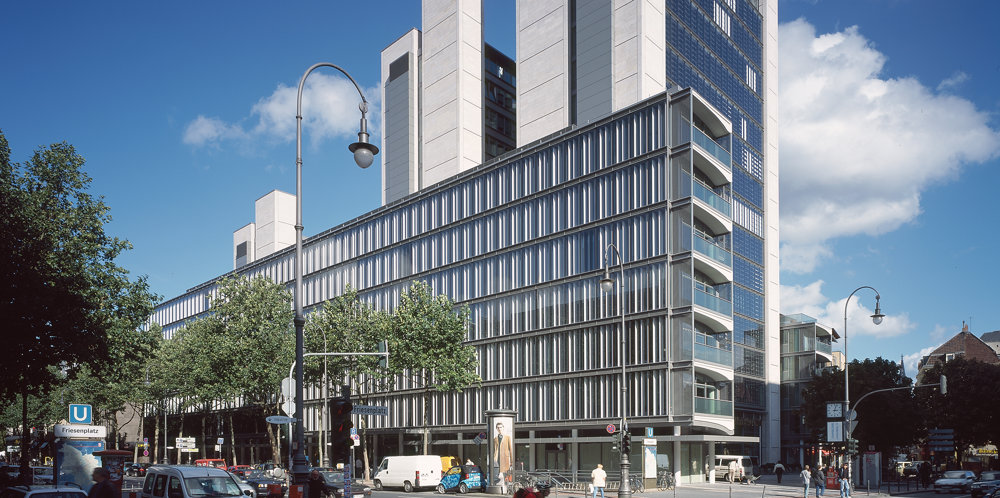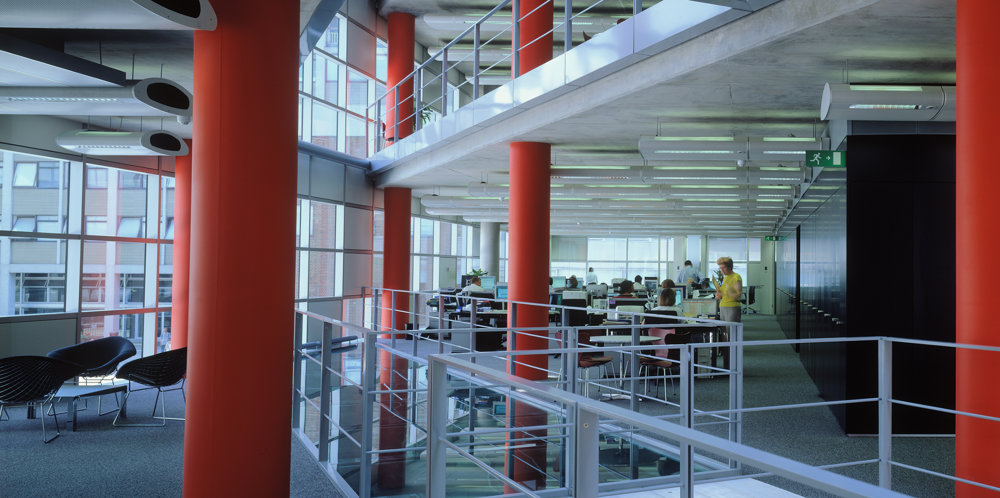When the leading French utility company, Electricité de France (EDF), commissioned a new regional headquarters, it aimed to bring together managerial and technical staff previously scattered over a number of locations around Bordeaux. Appropriately, as an energy provider, it was also persuaded to embrace the efficient use of electricity for all its energy needs. The resulting building both exemplifies the practice’s long-standing philosophy of encouraging social integration and amenity in the workplace and makes a compelling case for adopting more sustainable development strategies.
The building has a thermally efficient building envelope that capitalises on a tradition of excellence in concrete construction in France. In this respect, it draws on the lessons of earlier French projects, notably the Lycée Albert Camus in Fréjus, which employs passive climate control techniques dating back to traditional Arabic architecture. Like the Fréjus Lycée, the EDF building’s reinforced concrete frame and ceiling vaults - designed for good acoustic performance - have a high thermal mass, which helps to maintain constant internal temperatures. Natural ventilation and daylight are exploited as much as possible, both to reduce energy consumption and to create enjoyable working conditions. In the summer, high-level vents open automatically to cool the building fabric overnight. Daytime cooling is provided by chilled floors, which can alternatively be heated in the winter. The windows incorporate mirrors, or ‘light shelves’, to reflect light into the office interiors, while cedar louvres prevent solar gain. Following the strategy of relying on ‘geometries, not mechanisms’, the louvres are fixed and aligned to respond to very different light conditions on the east and west facades. Additionally, the building reuses its own waste energy, the heating and cooling system being run by an electric pump powered by the central exhaust stack.
A model for efficient energy management, the building is also rooted in the landscape traditions of the region. From the covered entrance plaza, which forms the visual focus of the scheme, the long entrance axis continues in an avenue of trees, the pleached limes and gravel recalling the scale and geometry of the nearby Château Raba as well as the great Place des Quinconxes in the centre of Bordeaux.









